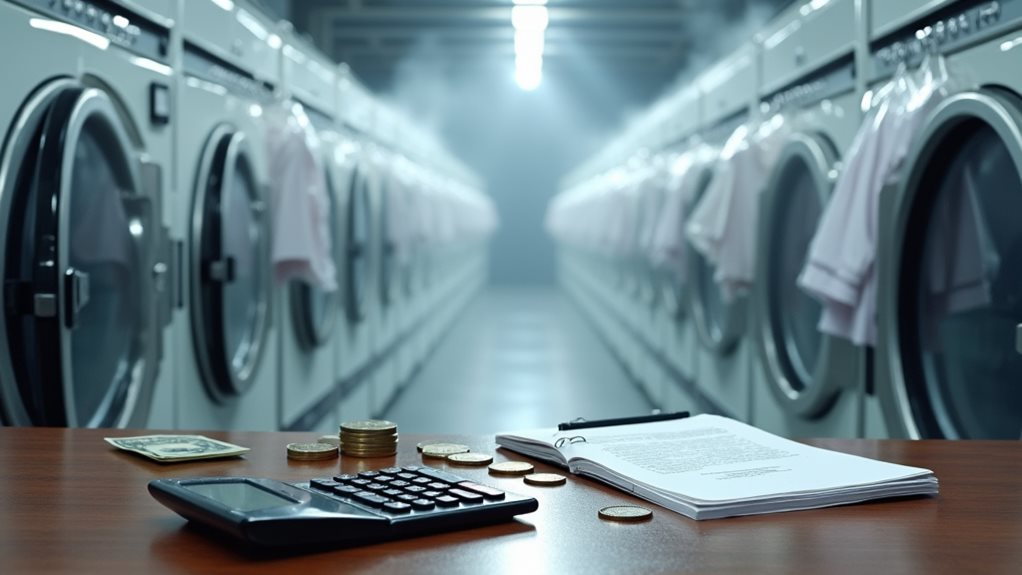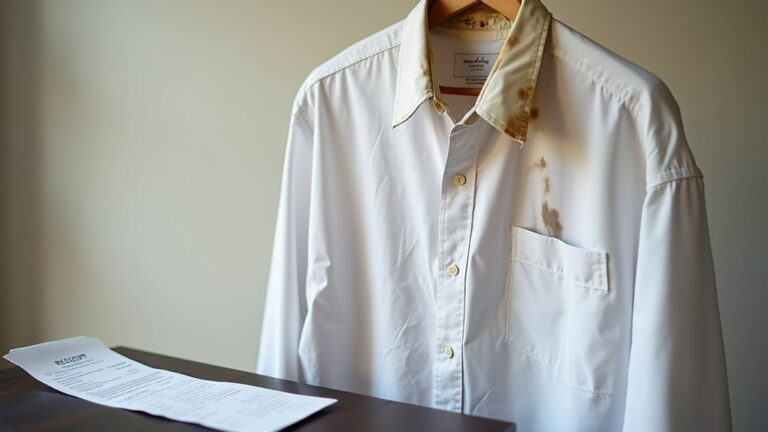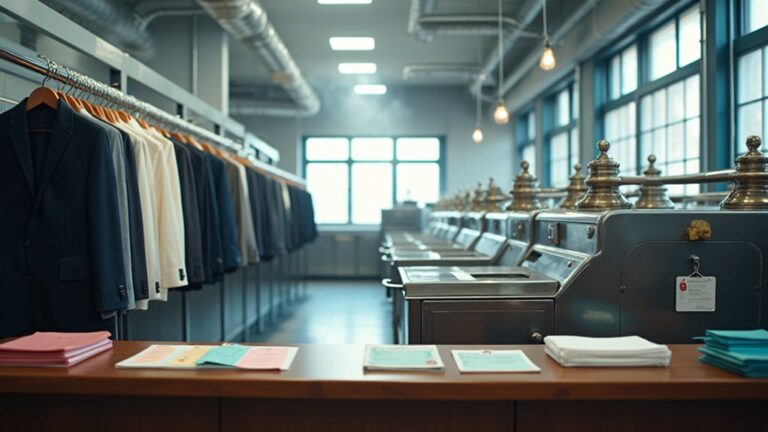You can tackle the dry cleaning pollution problem by implementing a Pigovian tax that forces businesses to pay for environmental damage they’re currently dumping on your community. This tax increases their production costs to match the true social costs, naturally pushing them toward cleaner technologies and ideal production levels. When companies face the real price of their pollution—say $2 per pound of harmful chemicals—they’ll invest in eco-friendly alternatives, and you’ll discover the fascinating economics behind this transformation.
Understanding the Market Failure Problem in Dry Cleaning Operations
When I first walked past my neighborhood dry cleaner last spring, I couldn’t help but notice that sharp, chemical smell drifting from their back ventilation system, and it got me thinking about something economists call market failure that’s quietly happening right under our noses.
You see, dry cleaning operations create negative externalities through pollution that affects everyone in the community, yet the business only considers their private costs when setting prices. This means social costs exceed what they’re actually paying, preventing us from reaching the efficient level of production.
The marginal social cost includes health impacts and environmental damage that neighbors bear, while dry cleaners operate without fully accounting for these consequences. Traditional dry cleaning relies on perchloroethylene (PERC), a chemical solvent that can cause skin irritation, respiratory problems, and potential carcinogenic effects, creating health costs that extend far beyond the business premises. Even with the Clean Air Act providing some oversight, a targeted tax could bridge this gap effectively.
Implementing Pigovian Taxes to Internalize Environmental Costs
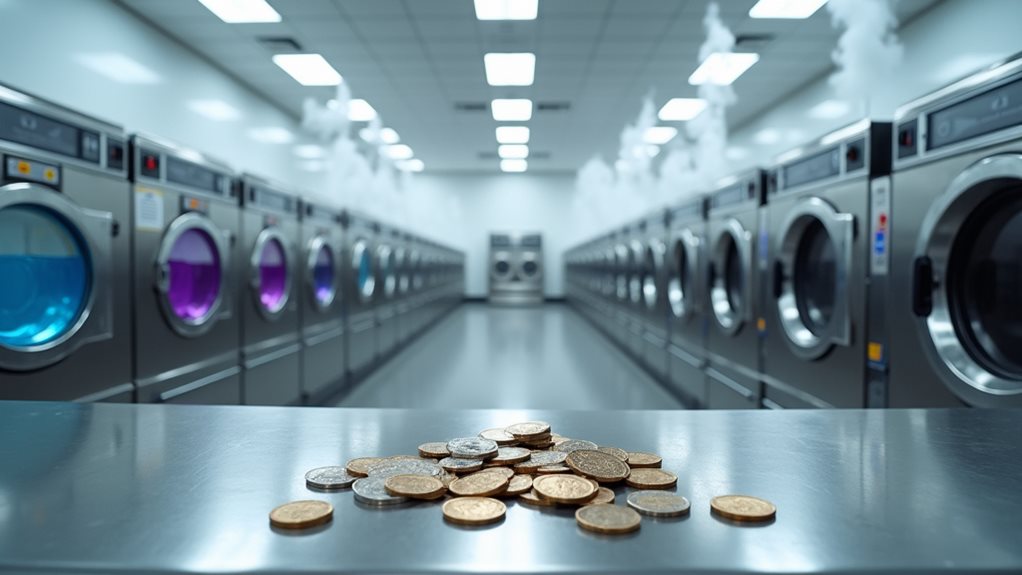
Since that chemical smell from my local dry cleaner represents a classic case of market failure, implementing what economists call a Pigovian tax offers an elegant solution that forces businesses to pay for the true cost of their environmental impact.
You’ll find this tax directly addresses external costs by increasing the marginal private cost of production, fundamentally making polluters think twice about their choices.
When you set the tax equal to the estimated social cost of pollution, you’re creating powerful incentives for dry cleaners to reduce their environmental impact or invest in cleaner technologies.
This approach helps achieve a socially ideal level of production while generating revenue that can fund sustainability initiatives—it’s like killing two birds with one stone! 🎯
Such taxation becomes particularly compelling when considering that traditional dry cleaning solvents like perchloroethylene can contaminate air, water, and soil while posing serious health risks to both workers and customers.
Aligning Marginal Private Costs With Marginal Social Costs
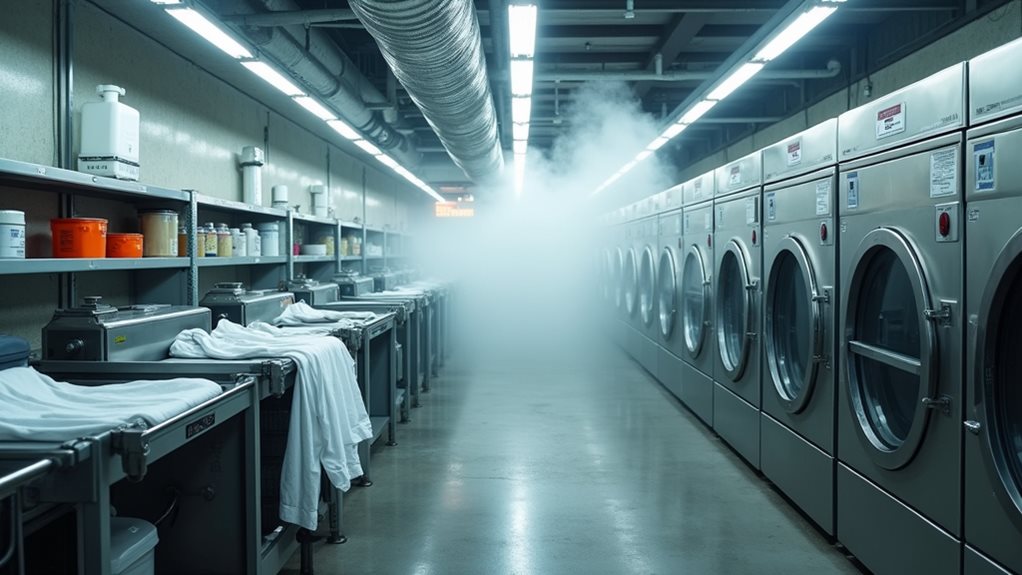
While the economic theory behind Pigovian taxes might sound like dry textbook material, the real magic happens when you understand how these taxes actually bridge the gap between what businesses pay and what society truly bears—it’s like finally getting your roommate to pay their fair share of the electric bill! 💡
The fundamental issue here revolves around a simple yet profound disconnect: dry cleaning businesses currently operate under marginal private costs that only reflect their direct expenses like labor, rent, and chemical purchases, completely ignoring the hidden environmental costs that spill over onto the rest of us through air pollution and health impacts.
- Tax on dry cleaning forces businesses to account for external costs they’ve been passing along to society
- Marginal private cost increases to match marginal social cost, creating honest pricing that reflects true societal impacts
- This alignment naturally guides dry cleaning services toward the efficient production level without heavy-handed regulations
- The pollution tax transforms this negative externality into a financial reality, encouraging smarter resource use decisions
Traditional dry cleaning operations rely heavily on perchloroethylene (PERC), a toxic chemical solvent that creates significant health risks including potential cancer-causing properties and nervous system damage, costs that are currently borne by society rather than the businesses generating these harmful externalities.
Calculating the Optimal Tax Rate for Maximum Efficiency
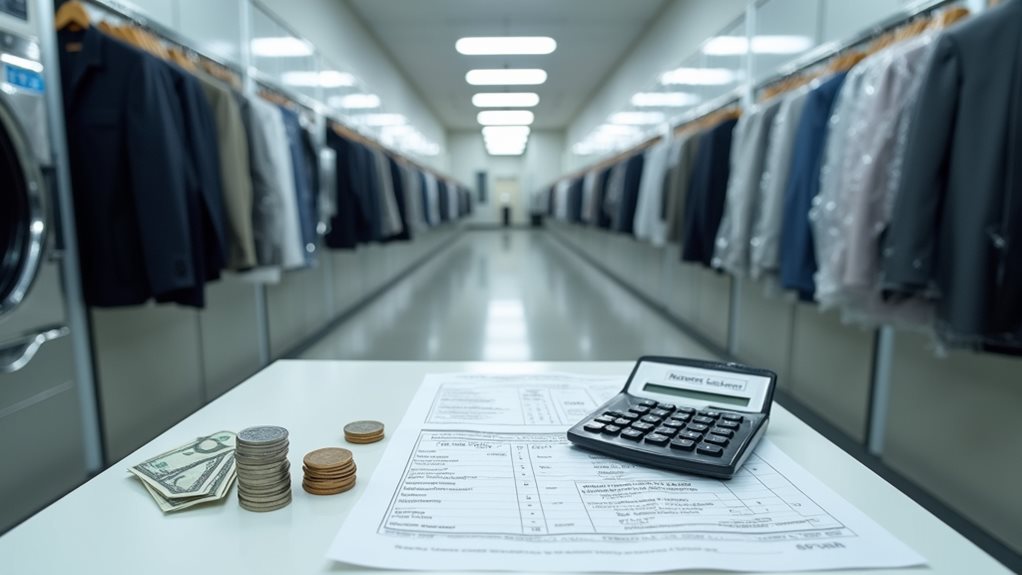
Although setting the perfect tax rate might feel like trying to hit a moving target in the dark, the process actually follows a surprisingly logical formula that economists have refined over decades of trial and error—think of it as finding that sweet spot where your thermostat keeps everyone comfortable without breaking the bank. 🎯
The magic number you’re looking for equals exactly the difference between what society pays (marginal social cost) and what dry cleaners currently pay (marginal private cost), which means if pollution damages cost society $5 per cleaning cycle while businesses only account for $3 in direct costs, your ideal tax sits right at that $2 gap.
This prime tax rate forces companies to internalize the negative externality, making efficient production possible while adapting to changing market conditions through careful tax implementation.
Such taxation becomes particularly important given that traditional dry cleaning solvents like perchloroethylene have been linked to serious health concerns including nervous system damage and liver problems.
Economic Outcomes and Behavioral Changes From Tax Implementation

When your newly implemented dry cleaning tax hits the market, you’ll witness a fascinating chain reaction that reminds me of watching dominoes fall in perfectly choreographed sequence—except these dominoes represent real businesses, consumers, and environmental outcomes that ripple through your local economy in ways both predictable and surprising. 💫
The immediate economic shift becomes crystal clear as dry cleaning prices jump to reflect those previously hidden pollution costs, which means Mrs. Johnson down the street suddenly thinks twice about dry cleaning her work blouses weekly, while savvy business owners scramble to invest in cleaner technologies to minimize their tax burden and stay competitive.
- Consumer demand drops as higher prices push people toward washing machines and eco-friendly alternatives
- Dry cleaning businesses adopt greener solvents and equipment to reduce their marginal social cost exposure
- Economic efficiency improves as the externality gets properly priced into market transactions
- Deadweight loss shrinks when private cost finally aligns with true social cost
This tax particularly targets operations using perchloroethylene (PERC), a toxic solvent known to contaminate groundwater and pose serious health risks through carcinogenic vapor exposure.

